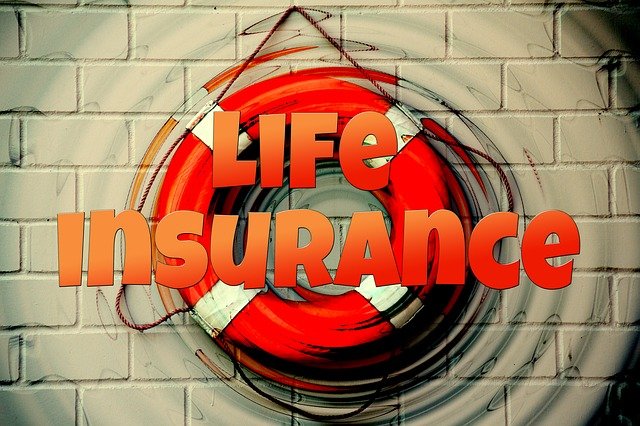Often times when I am talking with experienced entrepreneurs and executives I get a sense that they live as if they were Invincible. Not invincible in the hubris sense, but more they enjoy the greater thrills of life. They’ve reached a point where income and expenses are abundant. This is an amazing achievement and one many spend a lifetime trying to accomplish. But do they have enough protection to maintain this elaborate lifestyle? What if a tragic life event occurs and that person is left paralyzed? Will their family continue to get by without their income? Questions like these make it vital for you to protect yourself from being Exposed.
Asset Protection-
“Your greatest asset is your earning ability, to apply your knowledge, skills in order to get results which others will pay.” – Brian Tracy
You probably spent decades honing your craft to become a doctor, specialized lawyer, an executive, or successful business owner. Yet, I bet you probably never considered your earning potential as an ASSET. If you have auto, home, and health insurance to protect your cars, homes, and health – Why wouldn’t you protect your income potential in order to continue affording those nice luxuries? If you are like most, you likely worked very hard to obtain the ability to earn your SIX or SEVEN figure income. Therefore, it would be foolish to not insure your most valuable asset as it directly impacts you and your family! You are not invincible so don’t let yourself be exposed!
Disability Insurance
So you might be wondering, “How do I insure my income?” or “Don’t I already have enough coverage through my employer?” Well let’s dive into what disability insurance covers and some nuances that you may not be familiar with…
Short-Term Disability
There are two common classifications of disability insurance, short-term and long-term. Short- term disability insurance can cost about 1-3% of your annual salary, but it protects between 50-100% of your annual salary (depending on your employer’s policy). The benefit payout can start as soon as two weeks from when you file with your employer. The benefit period can last between two weeks and six months.
Many times your employer may offer short-term disability at a reduced rate or included in your benefits. While this may come with a taxable benefit to you, if you don’t have to pay the premiums it may be best for you.
Long-Term Disability
Long-term disability is really where you can protect your income for the long haul and unlock a protection for you and your family. Depending on your income long-term disability insurance can cost between 0.1% – 3% of your annual salary, but it can protect 40-70% of your annual salary. The cost is dependent on whether your premium is subsidized by your employer. The benefit payout period typically starts 90 days, or three months, after filing for disability. You can purchase a benefit period as short as 1 year or as long as until age 67.
If you are an employee, you may already have a base amount of long-term disability coverage in place through your employer. You NEED to review your coverage limits as it may ONLY cover your salary… and not your variable compensation. If your coverage is limited to your salary you may want to seek supplement coverage outside of your employers offerings.
On the other hand if you are the employer, you may have overlooked the need for coverage. Alternatively, if you have a policy when was the last time you checked your benefits and rider terms? In some cases, I have witnessed entrepreneurs forgetting to increase their coverage amount as their income increased over the years. I hope this doesn’t apply to you…
While some companies may offer long-term disability insurance to their employees, if you elect to have your employer pay the premiums then your insurance benefits will be taxable to you. If on the other hand, you elect to pay your disability premium with after tax dollars (from your checking account) then your benefits would be TAX FREE if your were to become disabled. This could have a major impact on your income if you were disabled for multiple years.
Premium Factors
By now you’re probably wonder “What are the factors that go into determining my annual premium?” While each provider calls certain categories by slightly different names, there are six common factors:
- Age: It’s simple, the younger and healthier you are- the better your rating. Age plays a factor in your initial application process. Fun Fact: 25% of people in their 20s are likely to become disabled before age 67.
- Elimination Period: The amount of time you need to wait to collect your benefit after becoming disabled. The longer the wait the lower the premium you have to pay.
- Occupation Class: This has to do with the hazardous environment of your occupation. A doctor or secretary will get a better rating than window washer or firefighter.
- Definition of Disability: This is a distinction between “own occupation” and “any occupation.” It is more expensive to have own occupation than any occupation. It is a lot easier to become disabled from a specific occupation vs. any occupation.
- Example- A brain surgeon has reconstructive hand surgery after a fall. This would qualify for own occupation coverage, but not any occupation. The doctor can not perform their current job, but could work in a clerical position or teach at a medical school while recovering from their disability.
- Benefit period: The amount of time the benefits will payout. For short-term insurance it could be as short as one month or as long as 180 days. Long-term insurance can be as short as one year or as long as until age 67. The longer the benefit period, the higher the premium.
- Benefit Amount- Another simple one, the higher the benefit payout- the higher the premium.
Case Study
In this example Michael is a successful chiropractor (employee) who is happily married with two children. He has just finished 10 years of industry specific schooling and finished his first year in private practice. The yearly totals of his budget are the following:
- $250,000 in salary
- $120,000 in living expenses.
- $45,000 in taxes owed
- $25,000 for children’s college fund
- $15,000 for retirement accounts.
- $50,000 in liability payments (i.e. mortgage/auto payments, health/life insurance premiums, student loans).
As you can see, Michael and the family are currently spending more than they can afford, but it’s expected that his salary could double within five years. Michael has a long way to go and very well could be exposed along the way.
When Micheal signed up for his benefits he selected the base disability policy. He never really gave much thought to his benefits until one of his peers explained he would have $125,000 of his income covered. In his mind this appeared to be icing on the cake to his large salary. He was under the mindset that he has 50% of his salary covered and his employer is paying the monthly premium which saves him money in the short-term. Let’s see if he is right…
Scenario 1: Base Disability Insurance Coverage
Imagine a tragic car accident leaves Michael paralyzed from the waist down. He can no longer work and is unable to generate the income his family needs. Based on his employer provided coverage he qualifies for 50% of his income in the form of a disability benefit ($125,000).
Unfortunately, he has to pay taxes on the benefit since he elected to have his employer pay the premium. Michael now owes around $20,000 in taxes each year.
While this $105,000 in after tax money is a big help to the family, it is not nearly enough! Remember, Michael and his family are living beyond their means. This means his wife is thrust into the breadwinner role and their entire dream life has been altered. To make matters worse, they are up to their ears in debt. They are forced to trim expenses and future goals to get dinner on the table every night. Unfortunately, in this scenario Michael was exposed.
Scenario 2- Base PLUS Supplemental Disability Insurance
Based on the financial planning advice provided by his trusted adviser Michael realized the importance of additional disability coverage. He understood the need to re-prioritize his expenses in order to afford the cost associated with his employer and supplemental disability policies. His advisor also had Michael change his election to make sure he paid the premium for his employer plan along with paying his premium for his supplemental plan.
Now imagine the same accident above leaves Michael paralyzed. Shortly after the accident he immediately files for his long term disability benefits. Based on his employer sponsored coverage and his supplemental coverage he is entitled to receive a combined 70% of his income. After his elimination period expires he begins receiving his monthly benefit – TAX FREE. Michael is now receiving $175,000 a year to help supplement his families needs.
In both scenarios Michael’s policies are written with “own occupation” terminology. This means he can now find work outside of his chiropractic private practice and still collect all of his disability benefits. For example, he decides to work as an online adjunct professor at his previous alma mater teaching future chiropractors. His adjunct annual salary is $50,000.
In scenario 1 Michael earns $175,000 a year entirely taxable. This is a glaring shortfall in his family’s expenses and goals. In scenario 2 Michael is earning $225,000 a year with only $50,000 as taxable income. Since there is now just a slight difference between his pre-accident income and post-accident income Michael has saved the family from a potential huge burden. In Scenario 2, Michael was protected and insured his family’s future!
So let me pose a question to you… How much would you pay to protect your income?
Conclusion
Nobody wants to talk about or even consider the idea of becoming disabled, but the reality is it happens far too often. Unfortunately, no one is invincible! You’ve worked so hard to earn your income, why not protect your earning potential? If any of the above resonated with your life experience or if you need help with understanding the nuances of disability insurance please reach out to our team. We would love to help you find the right coverage so you are not EXPOSED!
This article is for informational purposes only. C-Suite Planning is a registered trade name of Horizon Ridge Wealth Management, LLC is a registered investment adviser. Advisory services only offered to clients or prospective clients where Horizon Ridge Wealth Management, LLC and its representatives are properly licensed or exempt from licensure. Past performance does not guarantee future returns. Investing involves risk and possible loss of principal
capital. No advice may be rendered unless a client service agreement is in place.





